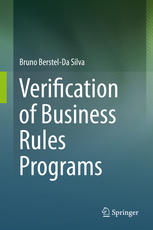

Most ebook files are in PDF format, so you can easily read them using various software such as Foxit Reader or directly on the Google Chrome browser.
Some ebook files are released by publishers in other formats such as .awz, .mobi, .epub, .fb2, etc. You may need to install specific software to read these formats on mobile/PC, such as Calibre.
Please read the tutorial at this link: https://ebookbell.com/faq
We offer FREE conversion to the popular formats you request; however, this may take some time. Therefore, right after payment, please email us, and we will try to provide the service as quickly as possible.
For some exceptional file formats or broken links (if any), please refrain from opening any disputes. Instead, email us first, and we will try to assist within a maximum of 6 hours.
EbookBell Team

4.4
92 reviewsRules represent a simplified means of programming, congruent with our understanding of human brain constructs. With the advent of business rules management systems, it has been possible to introduce rule-based programming to nonprogrammers, allowing them to map expert intent into code in applications such as fraud detection, financial transactions, healthcare, retail, and marketing. However, a remaining concern is the quality, safety, and reliability of the resulting programs.
This book is on business rules programs, that is, rule programs as handled in business rules management systems. Its conceptual contribution is to present the foundation for treating business rules as a topic of scientific investigation in semantics and program verification, while its technical contribution is to present an approach to the formal verification of business rules programs. The author proposes a method for proving correctness properties for a business rules program in a compositional way, meaning that the proof of a correctness property for a program is built up from correctness properties for the individual rules—thus bridging a gap between the intuitive understanding of rules and the formal semantics of rule programs. With this approach the author enables rule authors and tool developers to understand, express formally, and prove properties of the execution behavior of business rules programs.
This work will be of interest to practitioners and researchers in the areas of program verification, enterprise computing, database management, and artificial intelligence.